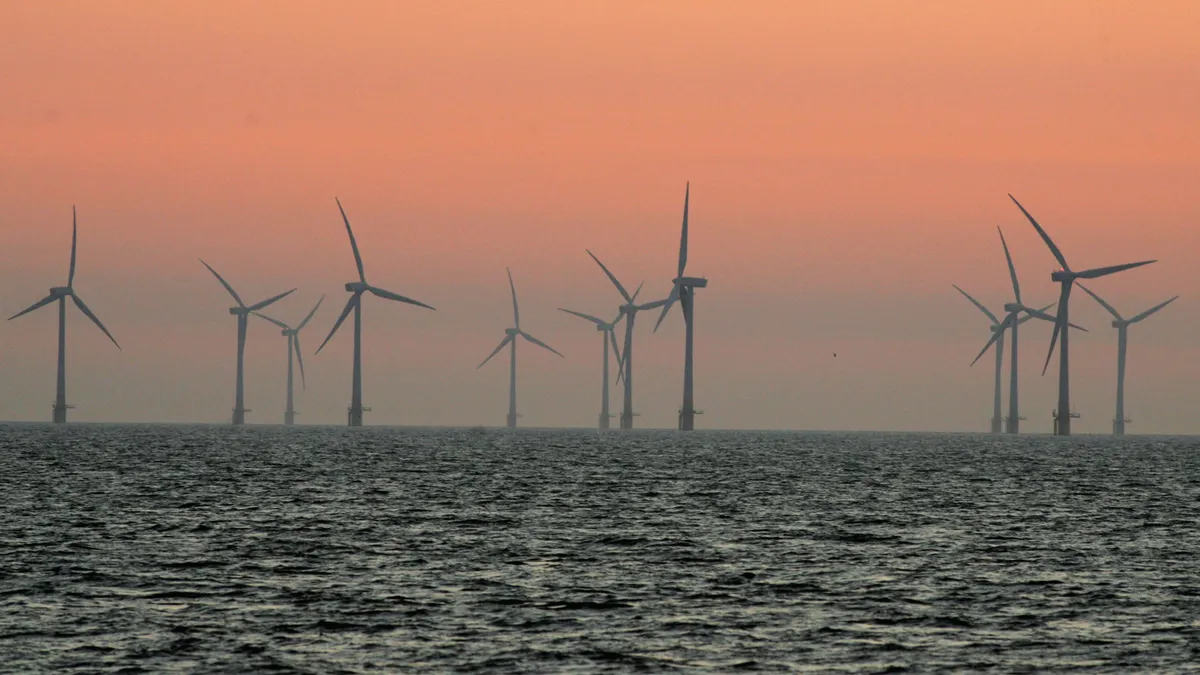Dive Brief:
- The California Energy Commission (CEC) on Wednesday approved $10.5 million in funding to renovate the Port of Humboldt Bay in Northern California to prepare it for offshore wind development.
- The U.S. Department of the Interior's Bureau of Ocean Energy Management (BOEM) is considering regions off the coast of Humboldt Bay and Morro Bay that could be suitable for floating offshore wind development. The two areas could collectively generate as much as 4.6 GW of energy.
- The investment “is a small but important step” in getting California closer to its offshore wind development ambitions, Nancy Rader, executive director of the California Wind Energy Association (CalWEA), said. “We have a long way to go in California to create a firm foundation for offshore wind. This is a start on one of those elements, but we need other things, like offtake assurance," she added.
Dive Insight:
Offshore wind’s production profile makes it complementary to California’s most abundant renewable resource, solar energy, according to Mohit Chhabra, a senior scientist with the Natural Resources Defense Council’s climate and clean energy program. It produces electricity in the evenings and winter months — times when solar tends to be scarce — which could help the state displace fossil fuel power plants.
Most offshore wind facilities that have been deployed globally use fixed bottom foundations, which make sense for shallow waters. California, however, is looking at setting up offshore wind turbines on floating platforms due to the depth of the Pacific Outer Continental Shelf. The floating offshore wind market is still relatively nascent.
In 2021, state lawmakers passed legislation directing the CEC to set offshore planning goals for the state to hit by 2030 and 2045 — a process that regulators need to wrap up by this June. Last week, clean energy advocates at a workshop urged the commission to aim for ambitious goals, which they said would help develop economies of scale. In addition, the CEC has been tasked with outlining a strategic plan to develop offshore wind and delivering it to the state legislature by mid-2023.
The funding regulators approved Wednesday will help outfit the Humboldt Bay port to handle the development and integration of offshore wind floating platforms, according to the CEC. The Humboldt Bay area is predicted to accommodate 1.6 GW of offshore wind.
The grant will go a long way in readying Humboldt’s port to assemble and transport offshore wind turbines, Chhabra said in an email.
“Because these floating turbines are massive, some are as tall as 800 feet from base to blade tip, they need to be assembled and shipped locally,” he added.
BOEM is planning to conduct auctions in federal waters off the coast of Morro Bay and Humboldt Bay later this year, CalWEA’s Rader said.
If the auctions happen before the industry has any offtake assurance, commitments to port space or transmission plans, bidders will likely be wary of making commitments to source their equipment locally in an effort to cut costs, according to Rader — which means the state could lose out on the jobs that offshore wind potentially could offer.
“We need more certainty for bidders to even be able to calculate the risks and benefits in an auction. But also, we’d like to see BOEM structure their auction differently in California" than it has for the East Coast, like by offering developers that commit to sourcing equipment locally a significant credit, she said.
Developing this industry will require large-scale investments by private industries and commitments by state utilities and community-choice aggregators to purchase offshore-wind-generated electricity, Chhabra agreed.
“Bringing offshore wind online in a timely and efficient manner requires forward planning and upgrades to California’s electric grid, ports infrastructure, workforce training, and safeguards for environmentally responsible development,” he added.















